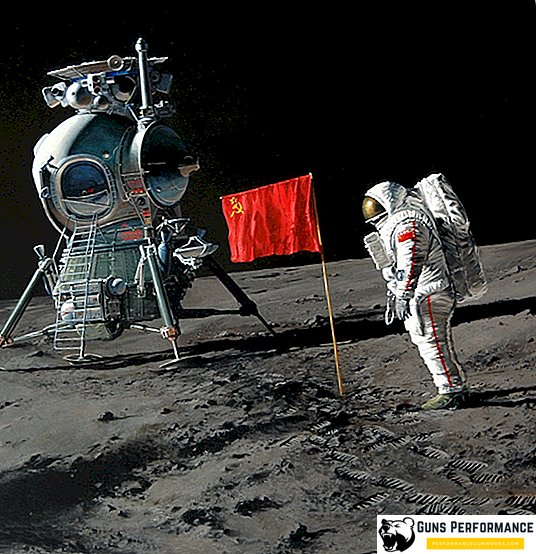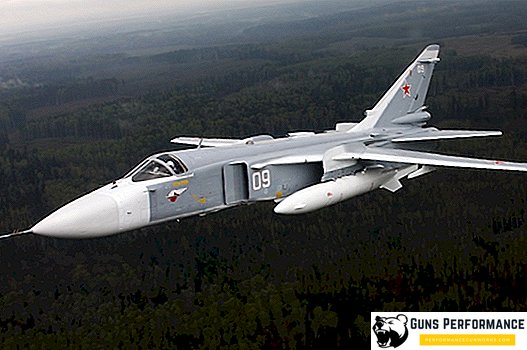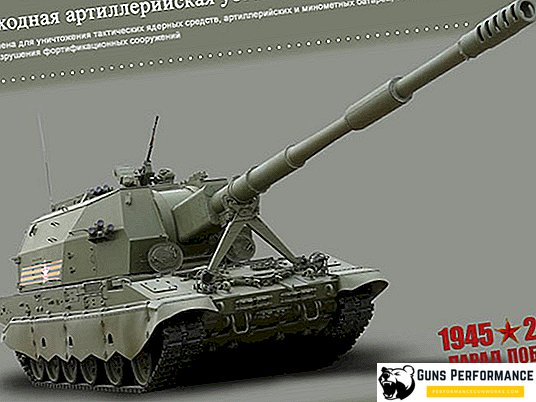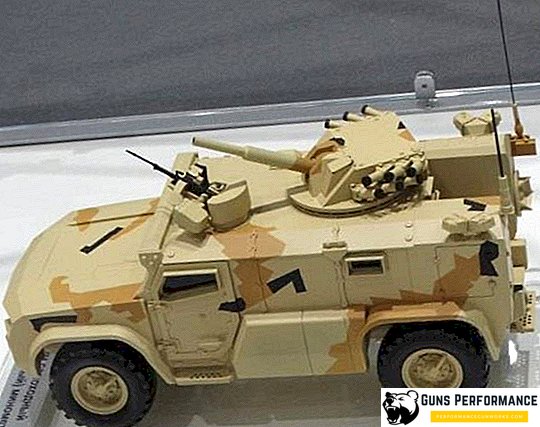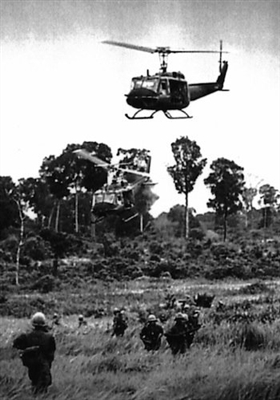After the Second World War, relations between the USSR and Western countries, yesterday’s allies, deteriorated. This was mainly due to the fact that, after destroying a common enemy, such superpowers as the Soviet Union and the United States began their opposition. The doctrine of the United States provided for limiting the spread of communism in the world and, as a consequence, limiting the sphere of influence of the USSR. A vivid example of this doctrine is the war in Vietnam.
Vietnam before 1940
In the Middle Ages, in the modern territory of Vietnam there were several states that fought among themselves in order to conquer the region, and also opposed China in its desire to seize Indochina. However, in 1854, French troops landed here, and 27 years later, the territory of Eastern Indochina (modern Laos, Vietnam and Cambodia) came under the control of the French colonial administration, and the territory was named French Indochina.

After that, in fact, in Vietnam there was a lull, which, nevertheless, was quite fragile. The wars of France against China and Siam (modern Thailand) with the aim of expanding their empire somewhat destabilized the situation in the region.

However, after World War I, the growth of national self-awareness and movement in Indochina began to grow seriously. In 1927, the National Party of Vietnam (or the Vietnamese Guomindang) was created, the main function of which was the struggle for the freedom of the country. And I must say that here the party had the most fertile ground for its activities. Thus, the population of Vietnam was very unhappy with the French plantations in the country, where the local population was exploited essentially as slaves. Growing irritation resulted in the Yenbai uprising in northern Vietnam. However, the overwhelming superiority of the French colonial troops in numbers, technology and training led to the rapid defeat of the rebels. In this case, the French showed atrocities and torture. It is worth noting the fate of the Coam village, which supported the rebels and was completely destroyed in the result of the bombing of French aviation.

After the suppression of the Yenbaisky uprising, the influence of the National Party of Vietnam began to noticeably fall, and soon it turned into a force completely unworthy of mention. Against this background, the creation in 1930 and the gradual growth of the popularity of the Communist Party of Vietnam became particularly noticeable. Its creator and first leader was Nguyen Ai Quoc, better known as Ho Chi Minh. At the same time, the Communist Party led the national liberation movement in the country and even managed to expand its political influence by participating in local government elections.
The Second World War
In 1939, the Second World War began. France was considered a great power with a huge colonial empire, which by this time, however, could no longer be called solid. However, the lightning defeat of the state in the summer of 1940 truly shocked the whole world: no one expected such a big power to endure even two months of intense fighting with the Third Reich.
The fall of the Third French Republic created a truly unique situation in all its colonies: in fact, remaining French possessions, these colonies, however, had practically no colonial administration. This did not slow down the use of the new French government assembled in Vichy, and soon control over virtually the entire colonial empire of France (with the exception of the territories in Equatorial Africa) was restored.
However, Indochina has become a truly weak point of French colonialism. In addition, the influence of Japan, which had well-defined interests in relation to Indochina as a springboard for pressure on Thailand, as well as a base for supplying wax and invading China from the south, increased. All these arguments forced the Japanese leadership to persevere in seeking agreements with France. The French leadership, realizing that Indochina will not be able to keep and that Japan, if necessary, will not stop even before the invasion, has agreed to Japanese conditions. Outwardly, it looked like the Japanese occupation of the region, but in fact it was a deal between France and Japan: in fact, the colonial administration was preserved, but the Japanese received exclusive rights in the territory of French Indochina.

However, a partisan struggle immediately began against the Japanese invaders. This struggle was led by the Communist Party, and it was also engaged in the arrangement of the guerrilla's strongholds and their equipment. However, the first speeches of the Vietnamese patriots were not successful and were mercilessly suppressed. It is noteworthy that the anti-Japanese uprisings on the territory of Indochina were suppressed mainly by the French colonial administration, completely subordinate to the Japanese leadership.
In May 1941, the Viet Minh organization was formed from the partisan detachments united by the Communist Party of Vietnam. Its leaders, realizing that the French and Japanese administrations had essentially become allies, began to fight against both of them. In fact, Vietminh was allied to the troops of the Western allies, diverting considerable forces of Japanese troops.
In order to more effectively fight the partisans, in March 1945, the Japanese created the puppet state of the Vietnamese empire, which had the goal of “Vietnamese” anti-partisan struggle. In addition to this, the Japanese leadership, after disarming the French colonial forces, hoped to find new allies. However, after the capitulation of Germany’s main ally, it became clear that the defeat of Japan was predetermined. With the surrender of Japan, the Vietnamese empire ceased to exist in August.
Realizing that the defeat of Japan was inevitable, the leaders of the Viet Minh decided to launch a major uprising in order to completely destroy the occupying forces and liberate the territory of Vietnam. On August 13, 1945, the uprising began. Already during the first week, the rebels managed to capture a large city in the north of the country - Hanoi - and occupy a large territory. During the following weeks, the Vietminh seized most of the territory of Vietnam, and on September 2, 1945, the creation of an independent state - the Democratic Republic of Vietnam was announced.
Situation after the Second World War (1945-1954)
As in 1940, Indochina is again practically in a power vacuum. Territories previously occupied by Japanese troops were either liberated by the Viet Minh forces, or remained essentially no man’s land. In addition, with the Vietminh, who had gained power by that time and had become a real force, Western countries refused to be considered, believing that this was just one of the partisan organizations. Indochina after the war was to be returned to France, in connection with which the Western allies had no desire to organize a national state here.
On September 13, 1945, the landing of British troops began on the territory of Indochina. In a very short time, they captured Saigon and a number of territories in the south of Vietnam, which were soon transferred under the control of the French.

However, not one of the parties was interested in starting an open war, in connection with which in the next, 1946, as a result of negotiations, the French-Vietnamese agreements were signed, according to which Vietnam became an independent state, but as part of the Indochina Union, that is, in essence protectorate of France. Both sides were not satisfied with the negotiations, and at the end of 1946 a war broke out, later called the First Indochinese.
French troops, amounting to about 110 thousand people, invaded Vietnam and occupied Haiphong. In response, the Vietminh called on his supporters for war against the French occupiers. Initially, the preponderance was entirely on the side of the colonial troops. This was due not only to the technical superiority of the French, but also to the fact that the Vietminh leadership refused to assemble a large army until it received enough combat experience.

At the first stage of the war (before 1947), the French carried out offensive operations against the partisans, which often ended up with major losses for the first. The most indicative in this regard is the operation of the French troops in the Viet-bac, which was intended to liquidate the leadership of the Viet Minh. The operation failed, and the French troops suffered a complete defeat.
As a result, already in 1948, the French command in Indochina decided to cease offensive actions and go into the tactics of static defensive points. In addition, a bet was made on the "windbreaking" of the war, thanks to which the creation of an independent Vietnam headed by the former pro-Japanese emperor Bao Dai was announced. However, Bao Dai was very unpopular among the people as "staining" himself in collaboration with the occupiers.
By 1949, came the relative balance of power. The French administration, with approximately 150 thousand soldiers, also had about 125 thousand Vietnamese soldiers from the puppet state. The number of Vietmini forces at this stage cannot be reliably indicated; however, thanks to the conduct of active actions, it can be said that it was approximately equal to the number of enemy forces.

As a result of the victory of the Communists in the Chinese Civil War, the strategic situation in the region has changed dramatically. Now the Vietminh forces conducted actions to clean up the regions in the north of the country to get supplies from China. During the 1950 campaign, the Vietnamese partisans were able to clear large areas in the north of the country from the French colonial forces, which allowed them to establish a line of contact with China.

At the same time, the Vietminh troops began to conduct full-fledged offensive operations against the French and their satellites, making it clear that France alone would not be able to cope with the Vietnamese partisans. It was at this point that the United States intervened in the war, sending both its advisers and weapons together with financial assistance to Vietnam. However, the course of the war has already suffered a change in favor of Whitemina. This was once again proved in the battle of Dienbienfu, when the Vietnamese, combining active actions and blockade, managed to seize a major stronghold of the French and almost completely defeat their large grouping.

In connection with the seriously shaken authority of France as a result of the defeat at Dienbienfu, negotiations began in Geneva between the French leadership and the leadership of the Democratic Republic of Vietnam. The result was an agreement to end the war. From now on, Vietnam was represented by two states divided by the 17th parallel: the communist North and the pro-American South. In July 1956, elections were supposed to be held, on the basis of which the two states were to unite into a united Vietnam.
Between the two wars (1954-1957)
The period 1954-1957 characterized in North Vietnam by strengthening the influence of the Workers Party of Vietnam (the Communist Party received this name in 1951). However, along with the growing power of PTV, the level of cleansing of party cadres reached an enormous scale, thanks to which, by 1958, between 50 and 100 thousand people were imprisoned, and about 50 thousand were executed.

The Soviet-Chinese conflict caused a split in the Workers Party of Vietnam. Thus, the party initially took pro-Chinese positions because of its position and narrow ties with its northern neighbor, as a result of which the party began to “purge” the pro-Soviet elements.

In 1955, the former emperor of the Republic of Vietnam (the official name of South Vietnam) Bao Dai was removed by Prime Minister Ngo Dinh Ziem. The latter was a pro-American politician, which significantly influenced the entire subsequent state foreign policy. Already in July 1955, Ziem announced that the Republic of Vietnam would not abide by the Geneva Agreements, and there would be no elections uniting the country. This was due to his "unwillingness to participate in the expansion of communism in the South."
In domestic policy, Ngo Din Ziem made a number of mistakes (for example, the abolition of many centuries-old traditions of village self-governments), with the result that the popularity of his government began to decline markedly, which prepared a very fertile ground for the actions of North Vietnamese partisans in the South.

The beginning of the war (1957-1963)
Already in 1959, the transfer of military advisers, who supported the anti-Ziem underground, to the South began from the Democratic Republic of Vietnam. Most of these advisers were from the South, but as a result of the division of the country they ended up in the DRV. Now they were organizing insurgents in the Republic of Vietnam, thanks to which in 1959 this became very noticeable.
Initially, the tactics of the South Vietnamese insurgents consisted of "systemic" terror: were destroyed are loyal to the regime of Ngo Dinh Nyema persons and civil servants. The administration of the latter drew attention to these incidents, but nothing decisive was done at that time. This was another reason for the expansion of the partisan struggle in the Republic of Vietnam.
Initially, the transfer of North Vietnamese troops to the territory of the South was carried out directly through the DMZ - the demilitarized zone located along the 17th parallel. However, soon the transfer began to be stopped by the South Vietnamese authorities, due to which the North Vietnamese leadership was forced to look for new ways to replenish the partisan detachments. The successes of the Communists in Laos allowed the transfer through the territory of the country, which the Communists took advantage of.
The growth of the anti-Ziem underground and the number of partisans in the territory of the Republic of Vietnam led to the fact that by the end of 1960 all anti-government forces here were united into the National Front for the Liberation of South Vietnam (abbreviated as NLF). On the other side of the conflict, primarily in the USA, the NLFN was named the Vietcong.

In the meantime, the partisans themselves were acting more arrogantly and rather successfully, which made the United States, not with a word, but with deed begin to support its puppet government in South Vietnam. The main reason for this was US foreign policy aimed at limiting the spread of communism throughout the world. Vietnam was a very convenient springboard with which it was possible to carry out pressure not only on the countries of South-West Asia, but also on China. Another important reason for supporting Ngo Dinh Ziema was internal politics. US President John F. Kennedy intended to succeed in foreign policy to weaken the positions of his competitors, and also to gain a “revenge” over the communist countries during the Caribbean crisis and after it.

At the same time, the corps of American military advisers in Vietnam was increasing, thanks to which, already in 1962, their number exceeded 10 thousand people. Military advisers were engaged not only in the training and preparation of the South Vietnamese army, but also planned combat operations and even participated directly in hostilities.
In 1962, for the convenience of the anti-partisan war, the whole territory of the Republic of Vietnam was divided into areas of responsibility of the South Vietnamese army corps. There were four such zones in total:
Zone I of the corps included the northern provinces of the country bordering the Democratic Republic of Vietnam and the demilitarized zone;
Zone II of the building occupied the territory of the central plateau;
Zone III of the corps included the territories adjacent to the capital of the Republic of Vietnam - Saigon - and the capital itself;
The zone IV of the corps included the southern provinces of the country and the Mekong Delta.
At the same time, the situation in the Republic of Vietnam related to the build-up of both opposing groups began to heat up. The extremely unreasonable policy of Ngo Din S'em, who managed to plunge the country into a deep crisis, also added fuel to the fire. The Buddhist crisis became the most noticeable and significant at that time, during which a number of followers of this faith (Ziem himself was a Catholic Christian) were killed or arrested, and several people self-immolating in protest against the actions of the authorities. Thus, by mid-1963, the Vietnam War was completely formed and in fact was already under way. However, it was in 1963 that it became clear that US intervention in the war was inevitable.
The United States enters the war (1963-1966)
It would not be superfluous to mention that the United States, with all its desire to stop the "red threat", was clearly not eager to be drawn into the protracted partisan war in Vietnam. There is evidence that as early as 1961, the United States and the USSR conducted secret negotiations through the mediation of India, and later of Poland. These negotiations were focused on the peaceful settlement of the Vietnamese question.

Далеко не всё руководство США считало целесообразным вступать в войну с противником, имеющим огромный опыт партизанской войны. Пример французов, совсем недавно разгромленных Вьетминем, сдерживал от ненужных решений. Но, к сожалению, военная верхушка США, преследовавшая свои цели, предприняла усилия, чтобы втянуть страну в боевые действия во Вьетнаме, в чём и преуспела.
Фактически началом Вьетнамской войны для США стал бой в деревне Апбак, в ходе которого южновьетнамские войска понесли серьёзные потери в живой силе и технике. Данный бой вскрыл низкую боеспособность армии Республики Вьетнам. Стало ясно, что без должной поддержки Южный Вьетнам не сможет продержаться долго.
Ещё одним событием, окончательно дестабилизировавшим ситуацию в стране, стало смещение и убийство Нго Динь Зьема и приход к власти военной хунты. В результате армия Республики Вьетнам окончательно разложилась, благодаря чему до самого конца существования государства она так и не смогла стать сколько-нибудь значимой силой. Отныне армия Южного Вьетнама больше была втянута в междоусобицы, чем в реальные боевые действия.
2 августа 1964 года американский эсминец "Мэддокс" в ходе патрулирования в Тонкинском заливе был перехвачен тремя северовьетнамскими катерами (согласно одной из версий). В ходе боя эсминец при поддержке самолётов F-8 сумел нанести существенные повреждения двум из трёх катеров, в результате чего те вышли из боя. Согласно некоторым данным, подобный инцидент повторился спустя 2 дня, 4 августа.
В результате США получили формальный повод для нанесения удара по Демократической Республике Вьетнам, что и было осуществлено уже 5 августа 1964 года. В результате был нанесён массированный авиационный удар по военным объектам Северного Вьетнама в рамках операции "Пронзающая стрела". В то же время Конгресс США, возмущённый действиями Северного Вьетнама, принял "Тонкинскую резолюцию", дававшую право президенту Линдону Джонсону право на применение военной силы в Юго-Восточной Азии.

Тем не менее, внутриполитическая обстановка в США заставила Джонсона повременить с использованием этого права. Будучи кандидатом в президенты на выборах-1964, он позиционировал себя как "кандидата мира", что лишь укрепило его позиции. В то же время обстановка в Южном Вьетнаме продолжала стремительно ухудшаться. Партизаны НФОЮВ, не встречая практически никакого сопротивления, успешно овладевали сельскими районами в центре страны.
Чувствуя, что позиции южновьетнамского государства всё ухудшаются, северовьетнамское руководство уже с конца 1964 года начало перебрасывать на Юг не военных советников, а целые регулярные воинские подразделения. В то же время характер действий отрядов НФОЮВ и их дерзость усиливались. Так, в феврале 1965 года нападению подверглись американские военные объекты, расположенные в городе Плейку, в результате чего погибли и получили ранения десятки человек. В результате этого нападения, президентом США Джонсоном было принято решение о применении военной силы против Северного Вьетнама. Таким образом, была проведена операция "Пылающее копьё", в ходе которой были нанесены воздушные удары по военным объектам в южной части Демократической Республики Вьетнам.
Однако операцией "Пылающее копьё" дело отнюдь не ограничилось: уже со 2 марта 1965 года американская авиация начала систематические бомбардировки северовьетнамских объектов, призванные подорвать военный потенциал ДРВ и пресечь тем самым поддержку "вьетконговцев". Однако с самого начала этот план был обречён на провал. Вьетнамцы - отнюдь не европейцы, и воевать и продолжать наступление могли даже в полностью безнадёжной обстановке. К тому же интенсивные бомбардировки Северного Вьетнама приводили к ощутимым потерям среди американского лётного состава, а также к растущей ненависти по отношению к американцам со стороны вьетнамского народа. Таким образом, обстановка, и так уже отнюдь не радужная, только лишь усугублялась.
8 марта 1965 года для охраны стратегически важного южновьетнамского аэродрома Дананг сюда были направлены американские войска в количестве двух батальонов морской пехоты. Именно с этого момента США были окончательно втянуты во Вьетнамскую войну, а их воинский контингент в стране лишь увеличивался. Так, к концу того же года Соединённые Штаты располагали во Вьетнаме примерно 185 тысячами солдат и продолжали планомерное наращивание их количества. Это привело к тому, что в 1968 году американский контингент здесь составлял примерно 540 тысяч человек. Налицо было также и увеличение количества боевой техники и авиации в стране.
С мая 1965 года американские Вооружённые силы начали проведение локальных наступательных операций во Вьетнаме. Первоначально эти операции представляли собой эпизодические бои с разрозненными частями НФОЮВ, зачистки районов и рейды в джунглях. Однако уже в августе благодаря северовьетнамскому перебежчику американскому командованию стали известны планы партизан об атаке базы Чулай, где был дислоцирован ряд американских подразделений. В этой связи было принято решение осуществить упреждающий удар по противнику и сорвать тем самым его планы.
18 августа американцы предприняли морской и вертолётный десанты с целью окружения 1-го полка НФОЮВ и его уничтожения. Однако сразу же американские войска натолкнулись на яростный и плотный огонь противника, но всё же сумели закрепиться на рубежах. Ситуацию усугубляла также засада, в которую попала американская колонна со снабжением. Однако, в результате подавляющего превосходства в огневой мощи, а также благодаря авиационной поддержке, американским войскам удалось выбить партизан со всех удерживаемых ими позиций и нанести противнику существенный урон. После этого сражения , более известного как операция "Старлайт", 1-й полк НФОЮВ был серьёзно обескровлен и на долгое время утратил боеспособность. Сама же операция "Старлайт" считается первой крупной победой американских Вооружённых сил во Вьетнаме. Тем не менее, эта победа не изменила ни общей обстановки в стране, ни хода войны.
В то же время американское руководство понимало, что до сих пор американские войска во Вьетнаме имели дело лишь с партизанскими формированиями, в то время как регулярные части северовьетнамской армии ещё не имели столкновений с американцами. Особую тревогу для командования американцев вызывало отсутствие каких-либо данных о боеспособности этих формирований и их мощи. Во всяком случае, ожидалось, что регулярные воинские подразделения будут сражаться лучше партизан.
В октябре 1965 года крупные северовьетнамские силы осадили лагерь американского спецназа Плей-Ме в провинции Плейку. Однако в результате противодействия южновьетнамских войск, поддержанных артиллерией и авиацией, вскоре части НФОЮВ были вынуждены начать отход. Таким образом, осада базы оказалась безрезультатной. Тем не менее, американское руководство приняло решение преследовать противника с целью его уничтожения. В то же время регулярные северовьетнамские части искали возможности боестолкновения с американцами.
В результате этих поисков произошла одна из крупнейших битв за всю историю Вьетнамской войны - битва в долине Йа-Дранг. Данная битва отличалась большой кровопролитностью и упорством сражений, огромным количеством потерь с обеих сторон, а также крупными силами, участвовавшими с обеих сторон. В сумме количество войск, принимавших участие в битве, было примерно равным дивизии.
Обе стороны объявили о своей победе в долине Йа-Дранг. Однако, если объективно взглянуть на количество потерь (данные с обеих сторон существенно разнятся) и на конечный результат, то можно предположить, что победили в битве всё-таки американские войска. Вряд ли потери вьетнамцев были ниже американских, так как Вооружённые силы США существенно превосходили войска НФОЮВ по выучке, техническому оснащению и средствам поддержки. Дополнительно нужно учесть и то, что план северовьетнамского руководства, включавший в себя овладение провинцией Плейку и рядом других районов, так и не был выполнен.
Война продолжается (1966-1970 гг.)
В 1965 году СССР начал направлять во Вьетнам большое количество помощи, включавшей в себя как военное оборудование и вооружение, так и зенитные расчёты. Согласно некоторым данным, в небе Вьетнама в боях с американцами участвовали и советские лётчики. Тем не менее, даже без советских лётчиков, советские "МиГи" схлестнулись в небе Вьетнама с американскими "Фантомами", нанося последним весьма ощутимые потери. Таким образом, война вступила в жаркую стадию не только на суше, но и в воздухе.
С 1965 по 1969 год американское руководство, проанализировав опыт предыдущих боёв, приняло решение о смене тактики. Отныне американские подразделения самостоятельно искали крупные подразделения партизан и, в случае, обнаружения, вели бои по их уничтожению. Эта тактика получила название "Свободной охоты", или "Seek and destroy" ("Найти и уничтожить").

Стоит отметить, что в период с 1965 по 1969 год эта тактика принесла довольно крупные плоды. Так, американцам удалось очистить от партизан ряд районов в центре страны. Но, на фоне продолжавшейся переброски северовьетнамских войск на территорию Южного Вьетнама через Лаос и демилитаризованную зону, эти успехи не могли кардинально изменить ход войны.
Вообще боевые действия в данный период времени во Вьетнаме существенно зависели от зоны, в которой они происходили. В тактической зоне I южновьетнамского корпуса боевые действия в основном вели силы Корпуса морской пехоты США. Эти подразделения имели высокую мобильность благодаря вертолётам и, как следствие, высокую огневую мощь. Эти черты подразделений были здесь как нельзя кстати: ведь необходимо было пресекать просачивание партизан, шедших через ДМЗ из Северного Вьетнама в Южный. Первоначально подразделения американской армии в зоне I корпуса закрепились в трёх изолированных друг от друга районах (Фубай, Дананг и Чулай) и затем начали действия по постепенному очищению зоны от партизанских сил с целью объединения своих районов и создания единого очищенного от партизан района, перекрывающего границу между обеими частями Вьетнама.
Тактическая зона II южновьетнамского корпуса, как уже было сказано выше, представляла собой плоскогорье, поэтому здесь боевые действия вели в основном бронекавалерийские части Вооружённых сил США и пехотные бригады и дивизии. Здесь характер боёв определялся рельефом местности. Основной задачей американских частей, как и в зоне I корпуса, было пресечение проникновения в Южный Вьетнам северовьетнамских войск, проходивших сюда транзитом через Лаос и Камбоджу и попадавших на территорию страны в Аннамских горах. Именно поэтому боевые действия здесь велись как в горах, так и в джунглях (где велось преследование всё же "просочившихся" северовьетнамских подразделений).
В тактической зоне III южновьетнамского корпуса перед американскими силами стояла задача обеспечения безопасности Сайгона и своих баз. Однако и здесь партизанская война в период с 1965 по 1969 гг. серьёзно усилилась. В ходе боевых действий американским войскам приходилось осуществлять патрулирование местности, вести бои с разрозненными частями НФОЮВ и вести зачистку районов.
В тактической зоне IV корпуса в основном боевые задачи выполняли правительственные войска Республики Вьетнам. Сам характер местности делал этот район страны весьма удобным для действий партизан, чем и пользовались части НФОЮВ. При этом в южной части страны партизанская война достигла весьма серьёзного размаха, в отдельные периоды по интенсивности превышавшая боевые действия в других зонах.
Таким образом, на всей территории Южного Вьетнама американские войска проводили операции по перехвату и уничтожению северовьетнамских войск и сил НФОЮВ. Однако эти результаты не имели должного результата и не были способны подорвать потенциал НФОЮВ.
В связи с продолжающейся войной, американское руководство приняло решение вновь подвергнуть военные и промышленные объекты Северного Вьетнама бомбардировкам. Так, уже в марте 1965 года начался период систематических бомбардировок ДРВ, которые продолжались в общей сложности более трёх лет и были прекращены лишь в октябре 1968 года. Эта операция получила название "Rolling Thunder" ("Раскаты грома"). Основной замысел американского командования заключался отнюдь не в том, чтобы подорвать ту часть военного потенциала Северного Вьетнама, которая непосредственно была ориентирована на предоставление помощи НФОЮВ и снабжение партизан. Замысел был более глубоким: ослабление потенциала противника было, конечно, весьма важным делом, но отнюдь не главным; главной же целью было политическое давление на руководство ДРВ и принуждение его к прекращению поставок оружия и пополнений партизанам.
Стоит отметить, что при этом зоны воздушных бомбардировок Северного Вьетнама были строго ограничены. Так, объекты, находившиеся вне этих зон, не подвергались бомбардировкам и фактически никак не затрагивались. Вскоре это заметили вьетнамцы и стали учитывать эту особенность при установке своих зенитных орудий, которые таким образом оказывались вне зоны поражения. Однако американцы всё же атаковали зенитные батареи, находящиеся за пределами зон бомбардировки, но исключительно в случаях, если эти зенитные батареи открывали огонь по самолётам США.

Отдельного упоминания стоит и тактика ВВС США при проведении операции "Rolling Thunder". При планировании целей учитывались не только функции объекта, но и его значение. Как правильно, первоначально американская авиация уничтожала наименее значимые для промышленности Северного Вьетнама объекты. В случае, если вьетнамцы не начинали работ по восстановлению разрушенного объекта, бомбардировкам подвергались более значимые объекты, и так далее. Однако заставить Северный Вьетнам завершить войну не удалось, а американская авиация понесла довольно тяжёлые потери, в результате чего операцию "Rolling Thunder" можно с уверенностью назвать неудачной.



